 Last updated: December 29th, 2022 11:21 AM
Last updated: December 29th, 2022 11:21 AM
Jamabandi – Haryana Land Records
Jamabandi portal contains the official land records of the Revenue Department of Haryana Government. Details like property registration, sanctioned mutations and Jamabandi of any land can be accessed on the Jamabandi portal. In this article, we look at the Haryana Jamabandi portal in detail.Services on Jamabandi Portal
The services of Jamabandi – Haryana are below:- Property Registration
- Get Jamabandi Nakal
- View Mutation Order
- View Cadastral Map
- Stamp Duty Details
- Revenue Court case information
What is Jamabandi?
The Revenue Department of Haryana prepares the document of Jamabandi. Jamabandi is the father of all land records. Jamabandi is also called ROR, which stands for ‘Record of Rights’. It is revised every 5 years when a new Jamabandi is prepared by the Patwari and attested by the revenue officer. Two copies of the revised Jamabandi are necessary. One copy consigned to the district record room, and other copy remains with the Patwari. In Haryana state Jamabandi (ROR) contains the following details:- Khewat
- Khatoni
- Patti
- Owner details
- Cultivator details
- Source of irrigation
- Filed numbers or khasranos
- Area and type of land
- Rent paid by cultivator, rate and amount
- Share or measures of right and rule of bach
Khewat Number
The Khewat number generally referred to as ’KHATA NUMBER’ by revenue officials. It is an account number given to the owner(s) which form a set of co-sharers who own the land in same or different proportions. The Khewat number in the Jamabandi runs sequentially starting from 1 to N. The Khewat Number may get changed in the next Jamabandi due to rearrangements that is same owners who were owners in some Khewat earlier may get another Khewat number in next Jamabandi.Khasra number
The Khasra number is a plot number given to a specific piece of land in the village. Khasra number may get divided due to sale, gift etc. during the mutation and is given a new number with denominator. For example, because of mutation, Khasra number 100 is divided into two parts then during mutation two divisions of this Khasra, i.e. 100/1 and 100/2 will be created, and the transaction takes placeNakal
To apply for Nakal, submit an application in HALRIS centre at the concerned Tehsil or SubTehsil Office. Computer operator will generate the ROR (Nakal) of Concerned Khewat in the computer and give the print of Nakal. Patwari deputed on the HALRIS centre will check the Nakal, sign on the Nakal and enter the Nakal in the Nakal register. Patwari will receive the Nakal fees (Rs.30) & give the computer-generated receipt to you and handover the Nakal to you.Verify Nakal Issued by HALRIS Centre
Step 1: Visit the main page of Jamabandi Haryana.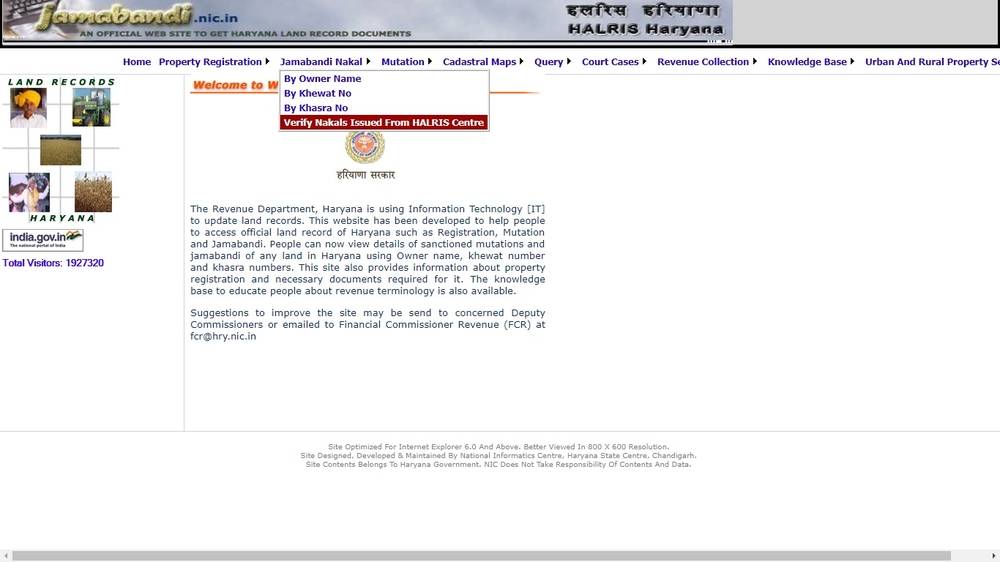 Step 1 Illustration
Step 2: Go to Nakal tap and select verify Nakal Issued from Halris.
Step 3: To verify Nakal enter 15 Digital Nakal Unique ID.
Step 1 Illustration
Step 2: Go to Nakal tap and select verify Nakal Issued from Halris.
Step 3: To verify Nakal enter 15 Digital Nakal Unique ID.
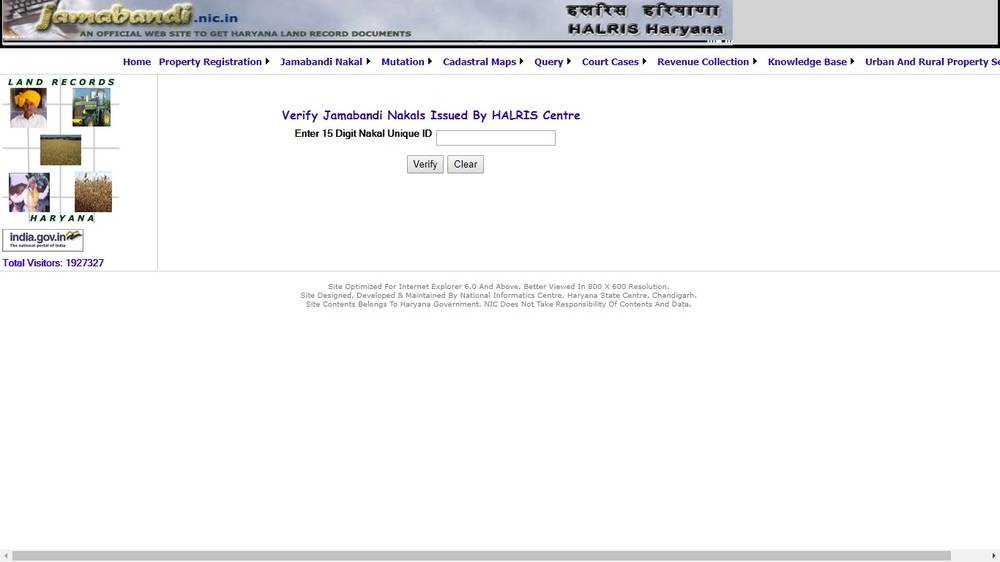 Step 2 Illustration
Step 2 Illustration
View Jamabandi Nakal
Step 1: Go to the home page of Jamabandi Step 2: The applicant can select these option from the tab.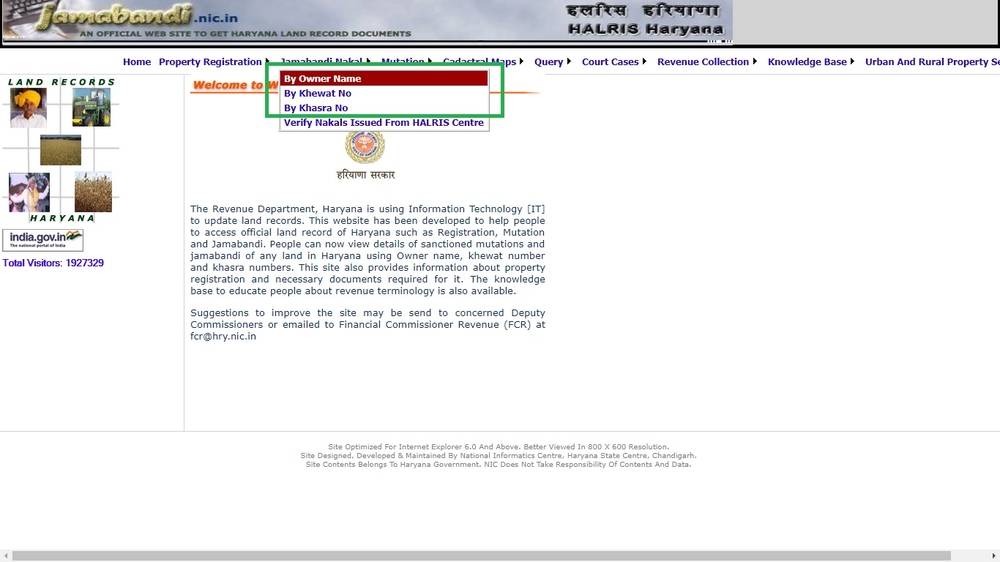 Step 3 Illustration
Step 3: Select the District, Tehsil or Sub Tehsil
Step 3 Illustration
Step 3: Select the District, Tehsil or Sub Tehsil
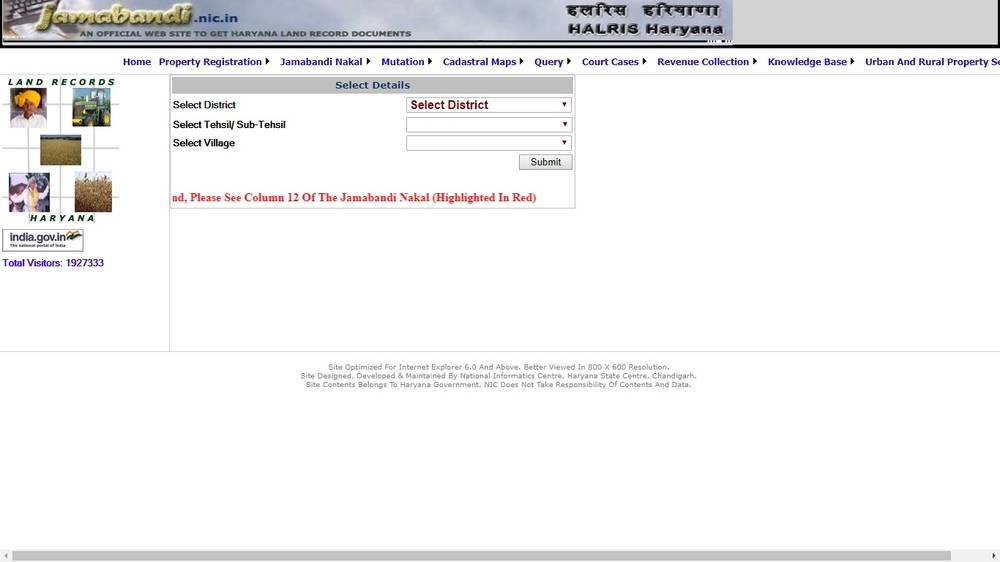 Step 4 Illustration
Step 4: After that, click on Submit Button.
Step 5: In the new page, the applicant needs to select ‘Owner list’.
Step 6: Select the name of the owner.
Step 7: Now the applicant can see all the details of Jamabandi
Step 4 Illustration
Step 4: After that, click on Submit Button.
Step 5: In the new page, the applicant needs to select ‘Owner list’.
Step 6: Select the name of the owner.
Step 7: Now the applicant can see all the details of Jamabandi
Mutation
Mutation (Intkal) is processed through which the owner’s name or his particular like liabilities get changed because of some transactions. The type of transaction may be one of the following.- Inheritance – Change of Ownership because of the death of the Owner
- Division of Land within the family
- Pledge or Release-Change in liabilities because of loan from a bank or repayment to the bank
- Court Decree-based on the court order
- Alienation – Conversion of land from agriculture to other purposes
- Acquisition by Government for a public purpose
- Grand of land by Government to poor people
View Mutation Order
Step 1: Visit the Jamabandi Haryana official page. Step 2: Select view mutation option from mutation tab.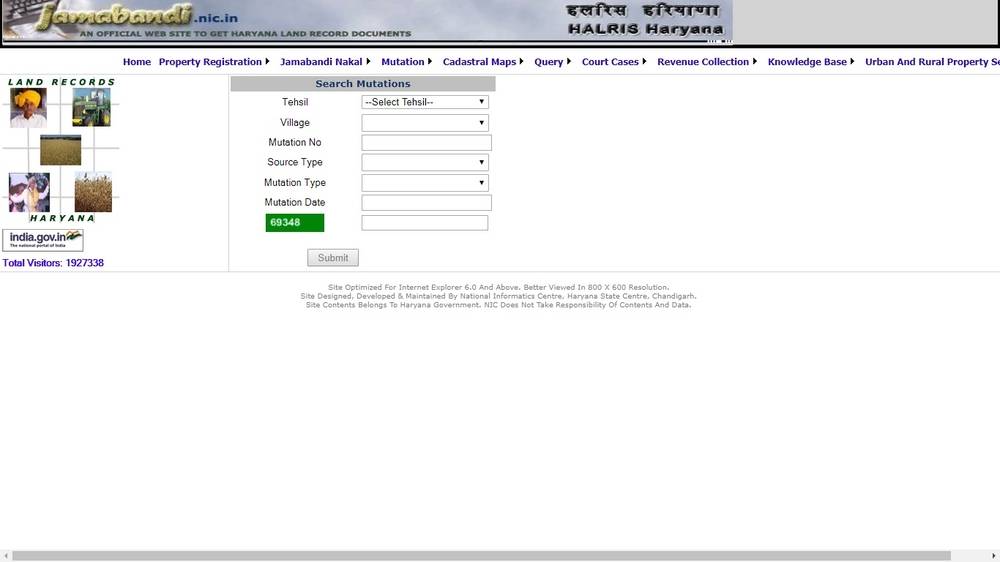 Step 5 Illustration
Step 3: Select the Tehsil, Village, Mutation number, Source Type, Mutation type, Mutation Date.
Step 4: Enter the captcha number shown on the page and click on Submit.
You can now view the mutation details.
Step 5 Illustration
Step 3: Select the Tehsil, Village, Mutation number, Source Type, Mutation type, Mutation Date.
Step 4: Enter the captcha number shown on the page and click on Submit.
You can now view the mutation details.
View Cadastral Map
A cadastral map is a map defining land ownership. The cadastral map is showing all registered geospatial data relating to registered plots. The cadastral map consists of cadastral units, each of which represents a single registered plot of land. To view Cadastral Map, select “view Cadastral Map’ option from the main page of Jamabandi. The cadastral map is likely to resemble the view shown below.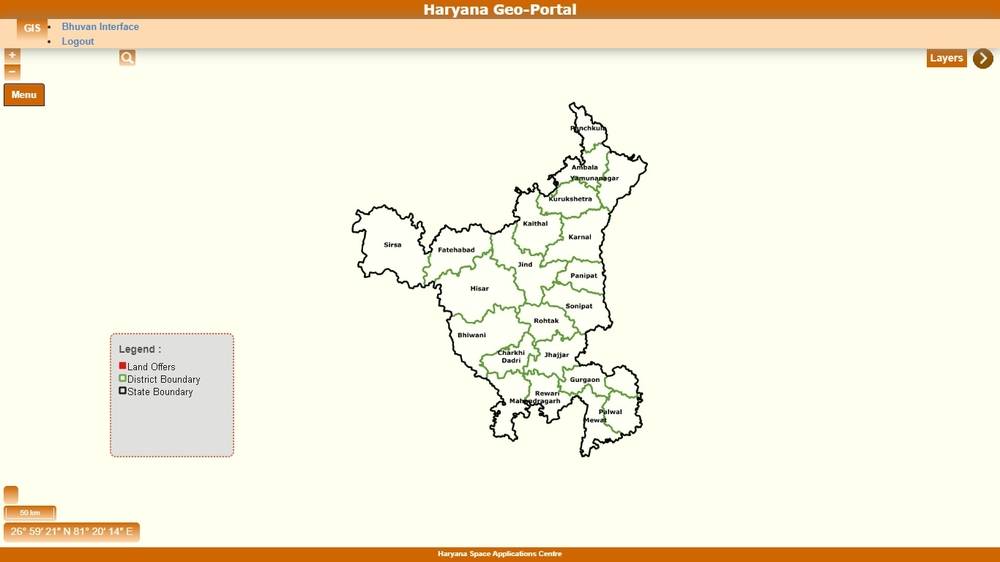 Step 6 Illustration
Step 6 Illustration
Revenue Court Cases
To get all the information about Revenue Court Cases, the applicant needs to select the court cases option from the main webpage. By clicking on it, they will lead the applicant to next page ‘Revenue Court Cases Justices Delivery System’.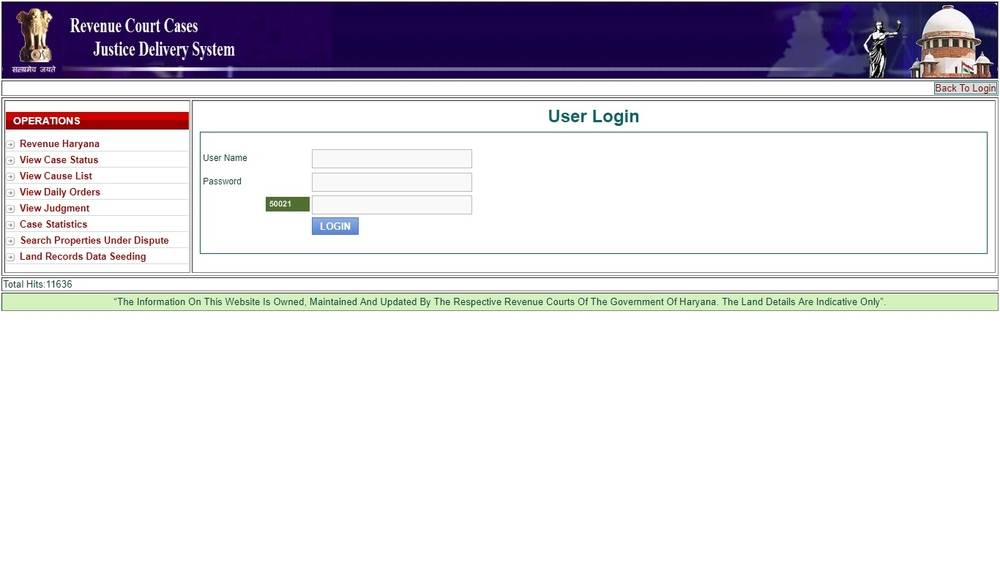 Step 7 Illustration
Step 7 Illustration
View Registered Deeds
Step 1: Go to the website Step 2: Select View registered deeds in property registration tab.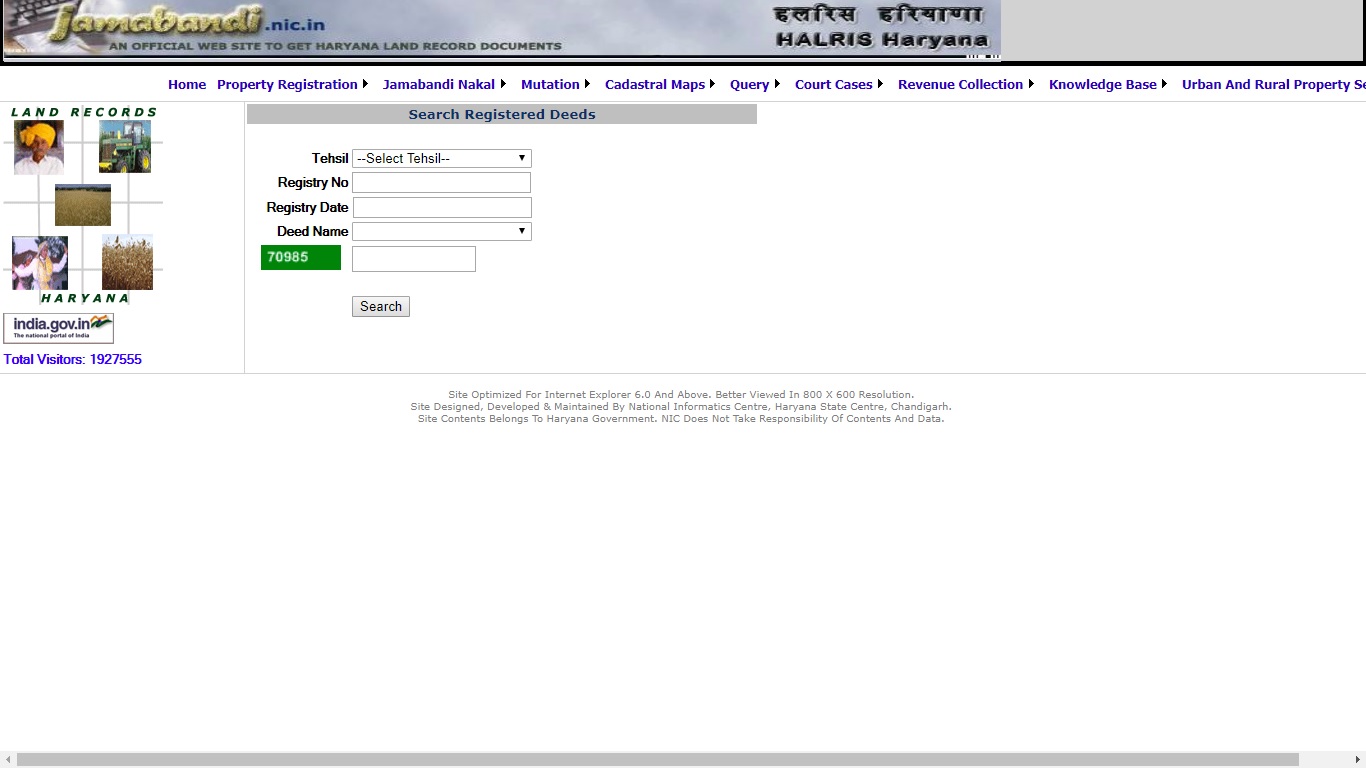 Step 8 Illustration
Step 3: In this page, the applicant needs to enter Tehsil, Registry number, Registry Date, Deed Name.
Step 5: Enter the captcha in the given box and click on Search.
Step 8 Illustration
Step 3: In this page, the applicant needs to enter Tehsil, Registry number, Registry Date, Deed Name.
Step 5: Enter the captcha in the given box and click on Search.
Popular Post

In the digital age, the convenience of accessing important documents online has become a necessity...

The Atalji Janasnehi Kendra Project that has been launched by the Government of Karnataka...

The Indian Divorce Act governs divorce among the Christian couples in India. Divorce...

When an individual has more than a single PAN card, it may lead to that person being heavily penalised, or worse,...

Employees Provident Fund (PF) is social security and savings scheme for employee in India. Employers engaged...


